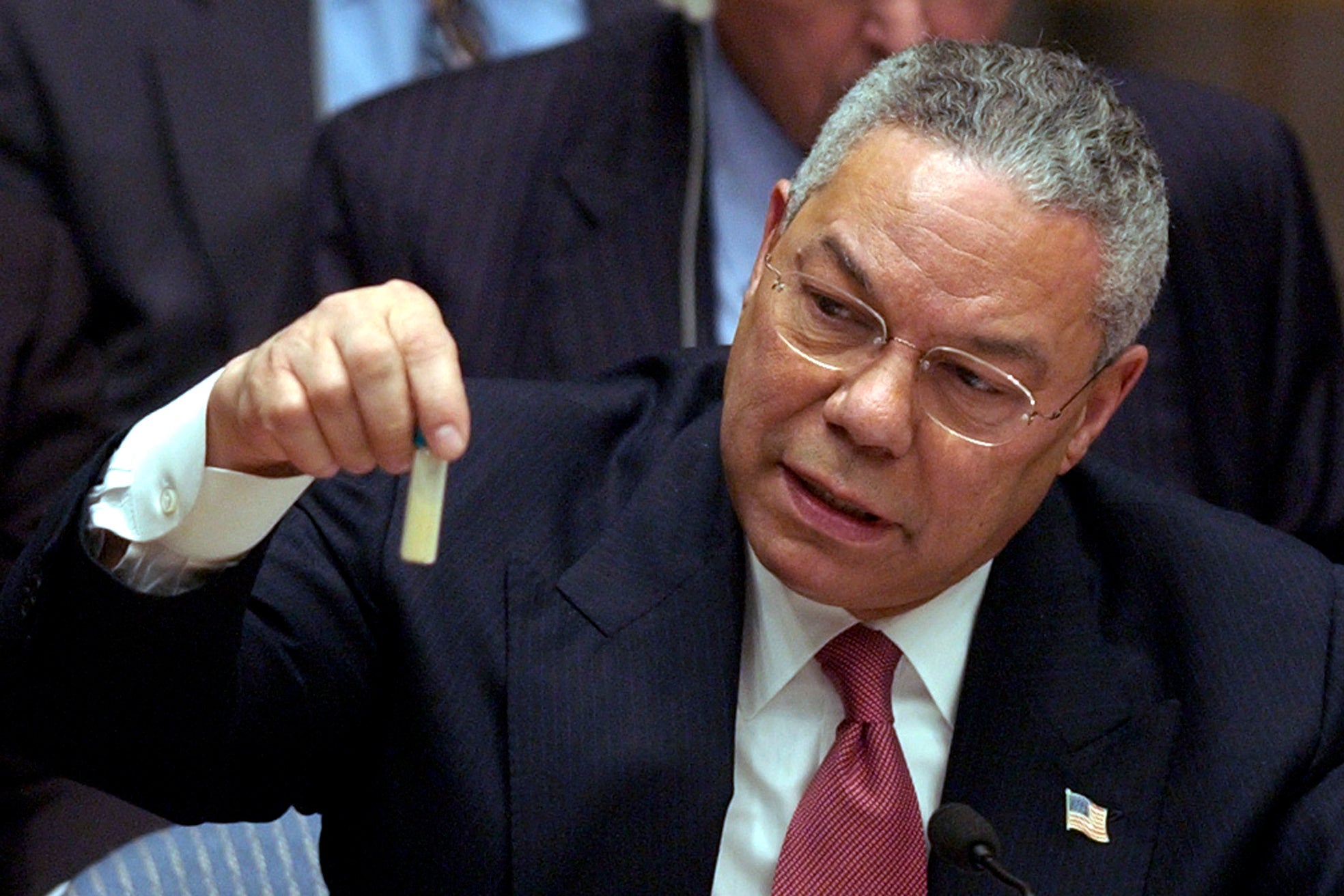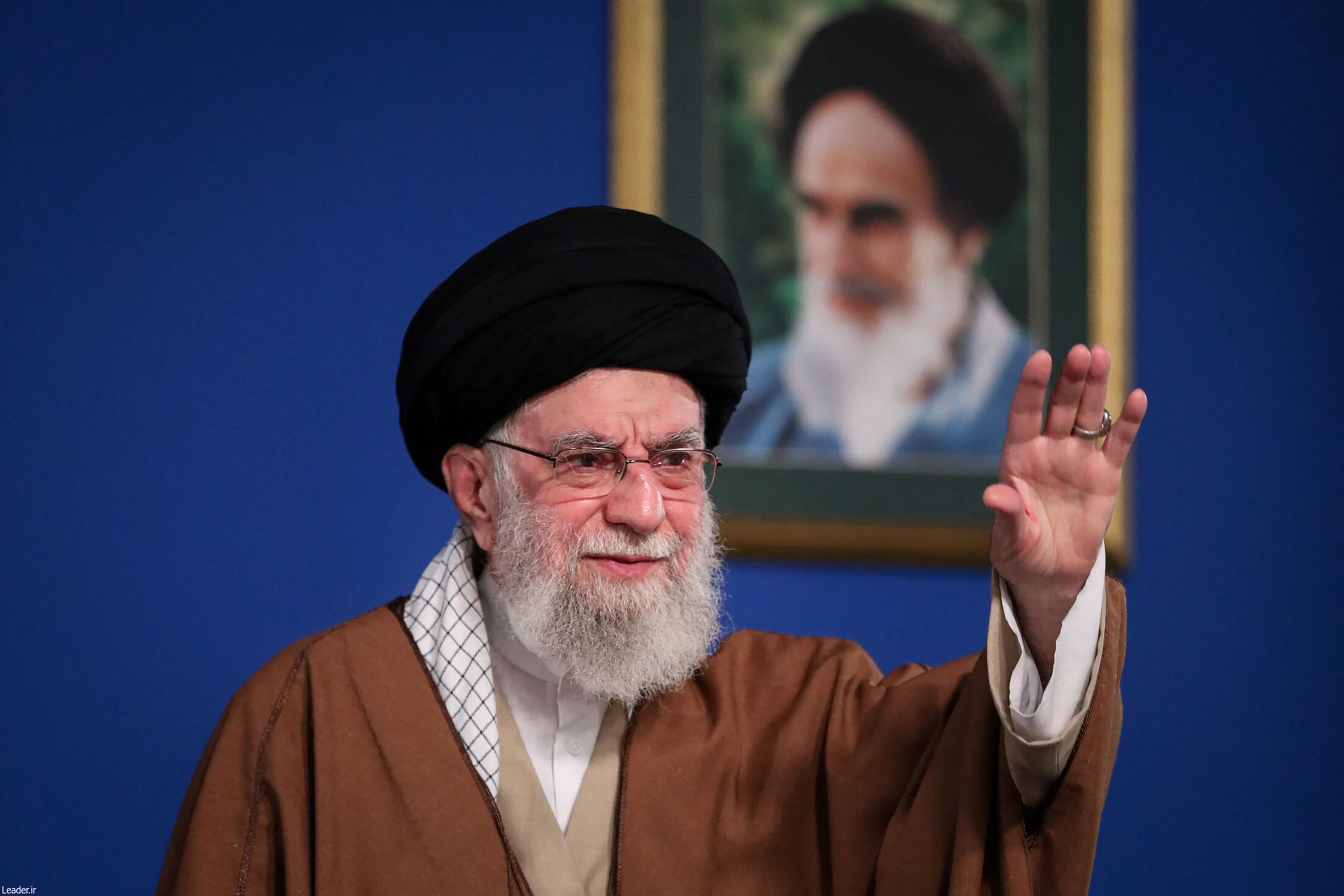George W. Bush and his administration of neocons spent years building a spurious case for the war in Iraq.
They collated sketchy intelligence about supposedly hidden weapons of mass destruction, fed it to a pliant press, went through the motions of seeking United Nations resolutions and formed a ramshackle coalition of the willing before going to war.
It took Donald Trump all of five seconds to create his own WMD scandal.
That came aboard Air Force One Tuesday morning when he rebuked his director of national intelligence, Tulsi Gabbard, for sharing a U.S. intelligence assessment that Iran was not seeking a nuclear weapon.
“I don’t care what she said, I think they were very close to having one,” he told the press corps.
It’s Groundhog Day in the Pentagon.
The U.S. stands on the precipice of joining another war in the Middle East to relieve another dictatorial regime of its non-existent deadly arsenal, but there are at least some procedural differences this time around.

In rejecting the assessment of U.S. intelligence agencies in favor of his own instincts, Trump appears to want to skip every step in the Manufacturing Consent handbook and declare war based on instinct alone.
Rather than send Marco Rubio to the United Nations with satellite photos, audio recordings and vials of undisclosed substances as Bush did with then-Secretary of State Colin Powell, Trump opted to simply declare that Iran could never have nuclear weapons and begin mobilizing the U.S. military to act in support of Israel’s ongoing attack.
Whereas Powell had a well of intelligence to draw on, however faulty, to build his argument in front of the world, it seems Trump has barely even glanced at his own agencies’ work.
Gabbard testified to Congress as recently as 26 March that 18 U.S. intelligence agencies continue to assess that “Iran is not building a nuclear weapon and Supreme leader Khomeini has not authorized the nuclear weapons program that he suspended in 2003.”
Trump’s flippant dismissal of that assessment is no small thing. It could be the determining factor in whether the U.S. joins a war against a sovereign nation, potentially putting American lives at risk across the Middle East and beyond.

Rather than busy himself with studying the intelligence that should weigh on those decisions, the president spent most of the last few days posting erratically on social media, calling on 10 million people who live in Iran’s capital Tehran to evacuate, for Iran’s “UNCONDITIONAL SURRENDER,” and even threatening the assassination of Iran’s Supreme Leader, Ali Khamenei.
“We are not going to take him out (kill!), at least not for now,” he wrote on Truth Social.
Trump’s position is all the more surprising given that his political rise was fuelled in part by his positioning as a critic of the so-called “forever wars” of the Bush era, particularly the Iraq War.
He shocked his fellow candidates during the Republican primary debates in 2016 when he accused them all of being complicit in the falsehoods that led to the war.
“I want to tell you. They lied. They said there were weapons of mass destruction, there were none. And they knew there were none. There were no weapons of mass destruction,” he said.
This time around, Trump appears to be playing the opposing role in building a faulty premise for a destructive war in the Middle East. MAGA billed itself as the destroyer of neoconservatism, but now in the White House and with their hands on the missile launcher and the B-52’s they look and sound much the same.

This is also the same person who said of Barack Obama in 2011: “Our president will start a war with Iran because he has absolutely no ability to negotiate. He’s weak and he’s ineffective. So the only way he figures that he’s going to get reelected — and as sure as you’re sitting there — is to start a war with Iran.”
Trump’s role in the build-up to this war didn’t begin this week, either. His decision to dismantle a previously successful nuclear agreement between Iran and world powers paved the way for the carnage of today.
In 2015, then-President Obama and a coalition of world powers managed to broker an agreement with Iran in which it agreed to dismantle much of its nuclear program, place limits on how much uranium it could enrich, and open its facilities to inspections in return for sanctions relief.
China, France, Germany, Russia, the United Kingdom, the United States, the European Union and Iran all signed on to the deal — a remarkable feat of diplomacy. All believed the deal was working.
Israel believed the deal was too lenient, and then-presidential candidate Trump campaigned on a promise to completely dismantle it.
In 2018, as president, Trump pulled out of the deal and initiated new sanctions against Iran. Tehran started to increase uranium enrichment and build up its stockpile once more, and removed monitoring equipment from nuclear facilities.

Over the past few years, Iran increased its enrichment to record levels of purity, close to the level needed to make a bomb. Still, U.S. intelligence agencies did not change their assessment that Iran was seeking a nuclear weapon, and the Trump administration was engaged in a new round of talks over the program.
At the same time, Israel’s prime minister, Benjamin Netanyahu, was signaling that he was readying an attack on Iran.
He has claimed for decades that Iran was on the brink of building a nuclear weapon, a development that he insisted required a military confrontation to avoid.
As early as 1992, as a member of the Israeli parliament, he claimed Iran was “three to five years” away from a bomb. Three years later, in a book titled “Fighting Terrorism,” he again claimed Iran was “three to five years” away from acquiring a nuclear weapon. In 2012, he gave a widely mocked speech to the United Nations in which he held up a picture of a cartoon bomb while claiming Iran was roughly one year away from building a bomb.
None of those warnings came to pass, but they were treated no less seriously.
While Netanyahu believed military action was the only way to remove the threat of a nuclear-armed Iran, he had been kept at bay by successive U.S. presidents.
Earlier this year, it appeared he was closer than ever to making that move. In April, he asked Trump for the 30,000-pound American GBU-57 bunker buster bomb, which can only be carried by U.S. aircraft, to destroy a nuclear site deep underground at Fordo, according to the New York Times.
Trump reportedly refused and asked Israel to allow his negotiations a chance.
But as the talks dragged on through the months, Trump lost patience. When Israel decided to launch its attack this month, the U.S. and Iran were days away from meeting again.
No new intelligence showing an increased nuclear threat has been presented or claimed by the Trump administration beyond the president’s passing comment on Air Force One. And senior administration officials told the New York Times they were unaware of any new intelligence showing a rush to build a bomb.
There are obvious differences with Iraq, of course. This war has already begun. Israel has already taken out Iran’s air defenses and is bombing military and nuclear infrastructure across the country at will.
It was Israel’s fait accompli that appears to have brought Trump around. The war has already begun. Trump may be able to join it in a limited capacity and claim victory, but the days of claiming the mantle of an anti-war president are over.

